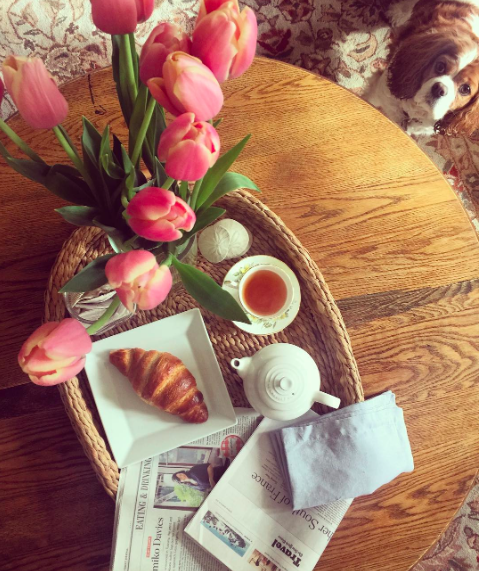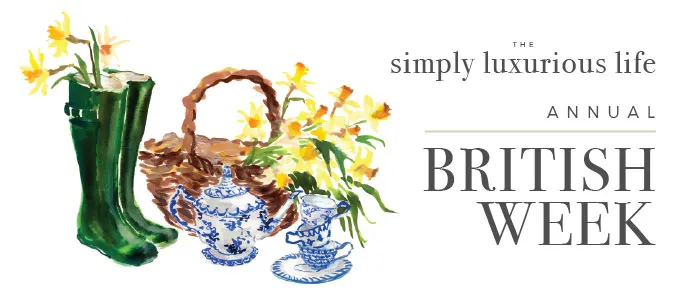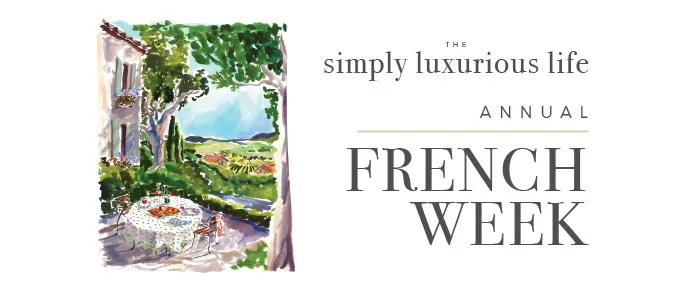Become a Member for as little as $4/mo and enjoy unlimited reading of TSLL blog.
~The Simple Sophisticate, episode #148
~Subscribe to The Simple Sophisticate: iTunes | Stitcher | iHeartRadio
“Man. Because he sacrifices his health in order to make money. Then he sacrifices money to recuperate his health. And then he is anxious about the future that he does not enjoy the present; the result being that he does not live in the present or the future; he lives as if he is never going to die; and then dies having never really lived.” —Dalai Lama
Most Sunday mornings at around nine or 10 o’clock you will find me in my living room having just returned from walking my boys, Norman and Oscar, settling in with a pot of black tea, a warm croissant from a local bakery and the Sunday newspapers. Such simple pleasures bring me a priceless amount of happiness, and I look forward to this weekly ritual as I tuck into bed each Saturday night.
The recent trending term hygge (pronounced hoo-gah) in the lifestyle publishing industry springs from the happiest country in the world as found by extensive research compiled by the United Nations World Happiness Report. Simply defined, incorporating hygge into your way of living is a choice to encourage the enjoyment of life’s simple pleasures.
There are a multitude of books focused exactly on how to welcome a hygge lifestyle into your life out on the market at the moment (and these are just a sampling released in the past 12 months). Just take a look below:
~Hygge: The Danish Art of Living Well
~The Nordic Theory of Everything
~Hygge: 25 Secrets from the Danish Art of Happiness, Getting Cozy and Living Well

Needless to say, the attention to a way of life that welcomes in the simplicity and everyday savoring of pleasures and reminds of the gifts a welcoming sanctuary can bring into our everyday lives is something that tickles me immensely. Many TSLL readers have pointed out the similarities between hygge and living simply luxuriously, and after reading two books on the subject, I certainly have to agree.
So how exactly do they overlap? How are they similar? Let’s take a look:
1. Savoring quality in each arena of life:
- food (a decadent hot chocolate with homemade whipped cream)
- relationships, the people you spend time with
- everyday experiences
- a small but welcoming home
2. Cultivating a sanctuary to relax, unwind and rejuvenate
3. Light a candle or two or three
4. Cultivating trust in those you love, in the communities you live and work in
5. Building a life that enables you to feel free, thus realizing you have more control over your level of happiness than you may have once assumed.
In other words, you truly can become the CEO of your own life while building and being a partner in your community, home and work place.
6. A strong, respectful support system
“meaningful, positive social relationships”
7. Practice gratitude, let go of want
8. Build and cultivate strong, healthy, loving relationships
The quality of one’s happiness increases with improved relationships, not surprisingly when we make more money.
“America has gotten richer, a lot richer, over the past fifty years, but we’ve not gotten happier.” —Jeffrey Saks author of the United Nations World Happiness Report
9. Become a lover of books
Discover the pleasure reading can bring when a wide open afternoon, evening or 30 minutes anywhere in your day arises. Pick up a book, snuggle up and dive in to discover something new. Keep the television off, put your cell phone away and get lost, letting go of time.
10. Become a regular visitor of nature
“Whether you are sitting by a river in Sweden or in a vineyard in France, or just in your garden or nearby park, being surrounded by nature enables you to bring your guard down and adds a certain simplicity.” Meik Wiking
11. Choose to be fully present
Put away the technology, allow your mind to be in the here and now and look around you. Savor the sun, savor the company, savor the flavor of the food. Savor the amazing life you have the fortune to be living.
12. Cultivate calm
13. Savor simple rituals
The mindset of a market economy versus a social-democratic economy is at once significant and worth contemplating. Often, based on where we live and the culture we are raised in when we see our success based on how others fare as well: in a market economy, it is more likely to be an independent mindset, and in a social-democratic economy, it is more of a collective success one seeks. Ultimately, we only have control over ourselves, but to ignore how our behavior and decisions effect others is to ignore the power of emotional intelligence in our lives. When we consider others in our decision making, it is a means of paying it forward, of cultivating more wellness, kindness and positive behavior that builds each other up rather than tears one another down.
15. Seek internal approval rather than external
Refrain from needing to wear labels or purchase more or larger homes, cars, shoes, clothing, etc. A mindset set on fine-tuning one’s outer appearance is a person who has not found peace within. When you do have peace within, the external becomes far less important and the once temporary highs are substituted with permanent peace.
The primary, underlying similarity that is at the core of living well, living simply luxuriously and thereby incorporating a hygge approach to life is to truly appreciate and savor the life we’ve each been given now. To drink the marrow from life so to speak every single day. It need not be excessive, expensive or grand. The true pleasures are actually quite simple.
It is the moments of sitting next to those you love, letting go of time and letting go of worry knowing you are living well, you’re living wisely and you haven’t been pulled off track by the marketing masses that merely want your money when superficially they promise you more happiness. They are wrong, you are right when you choose to live in such a way that focuses on your well-being. And well-being cannot be purchased, it must be consciously cultivated, tended to and patiently fine-tuned.
~What Does a Simply Luxurious Life Look & Feel Like?
Petit Plaisir:
~My Master Recipes; 165 Recipes to Inspire Confidence int eh Kitchen by Patricia Wells
[podcast src=”https://html5-player.libsyn.com/embed/episode/id/5183382/height/90/width/700/theme/custom/autonext/no/thumbnail/yes/autoplay/no/preload/no/no_addthis/no/direction/forward/render-playlist/no/custom-color/d0d4b9;color: #6f7056 !important/” height=”90″ width=”700″]





The hygge phenomenon hasn’t really taken off in France. The French already do some of it–the whole thing about getting together for a home-cooked meal with friends, lighting a candle, taking time to enjoy life–they see all those things as quintessentially French, so why stick a Danish word on them?
On the other hand, the French don’t hole up at home. They are going to have a coffee or a glass of wine at a café terrace and people-watch, even in the winter. And window shopping–leche-vitrine–is a favorite French pastime. Which aren’t hygge at all. I wrote a few weeks ago about the un-hygge-ness of France.
That said, they have their own ways of enjoying the simple pleasures of life.
one of my petit plaisirs is reading your posts, Shanon!
Keep up the amazing work.
Thank you Nuran! 🙂
Thanks for sharing! I just checked out a few of the books you suggested. I am Finnish and every time I visit Finland I am a bit in awe of the simplicity, yet classiness of their lifestyle. I have since then, tried to emulate a smaller home, less but higher quality clothing, and making time to enjoy moments in my day to day life. Thanks again for the reminder.
My husband and I got to have the honor of doing an exchange program in Sweden a few years back. I learned from that culture and the wonderful couple that hosted us the Hygge principle of living. Gratitude, enjoying the everyday life and simple living was how they lived everyday and I took home with me that concept and incorporated into my life today.
What a lovely opportunity!
I am from Finland myself, but I am not at all impressed by the ascetic way of Finnish or Scandinavan living. As for classiness of lifestyle, I find that most Finns I have encountered in my lifetime (both in urban and rural areas) dress poorly and their homes are overtly simple and lack personality, in short look the same. Personally, I think it is much more difficult to achieve the cosiness of English, French or German interiors, it requires much more skill and taste.
As for gratitude, I have travelled in most western- and eastern european countries. Gratitude and warm personal relations are not the first words that come to mind when I think of Scandinavia, unfortunately.
All the best to you Sharon, I read your blog every day and you are a great source of inspiration for me.